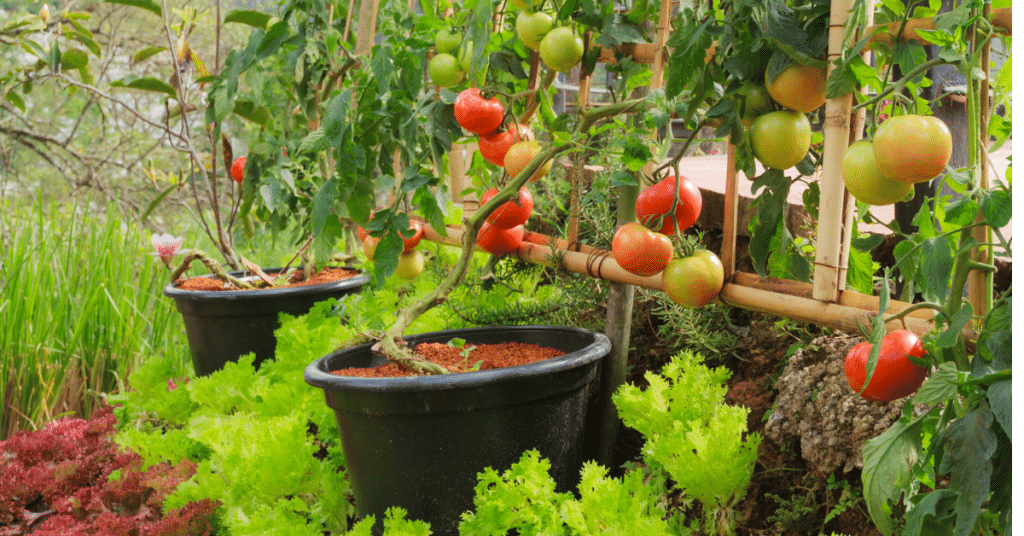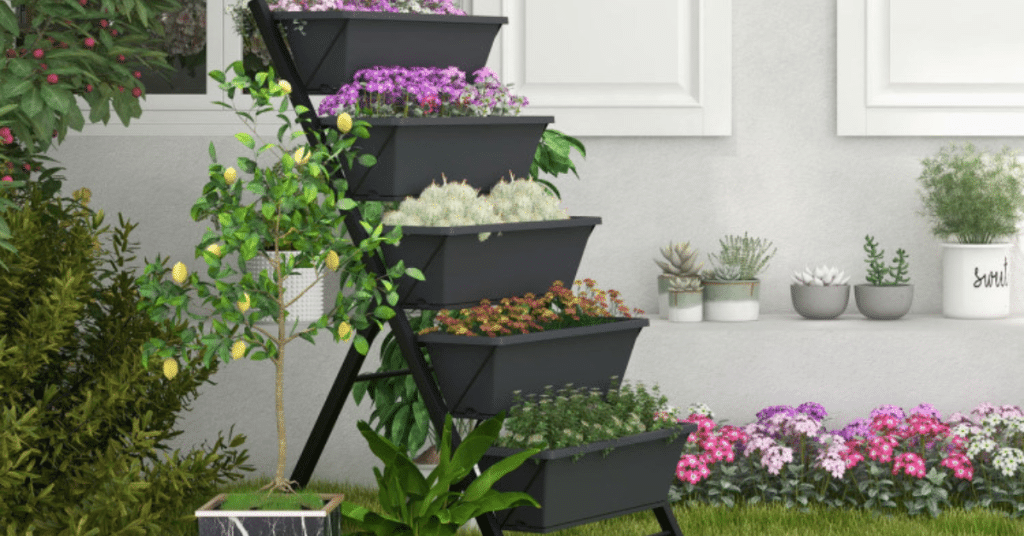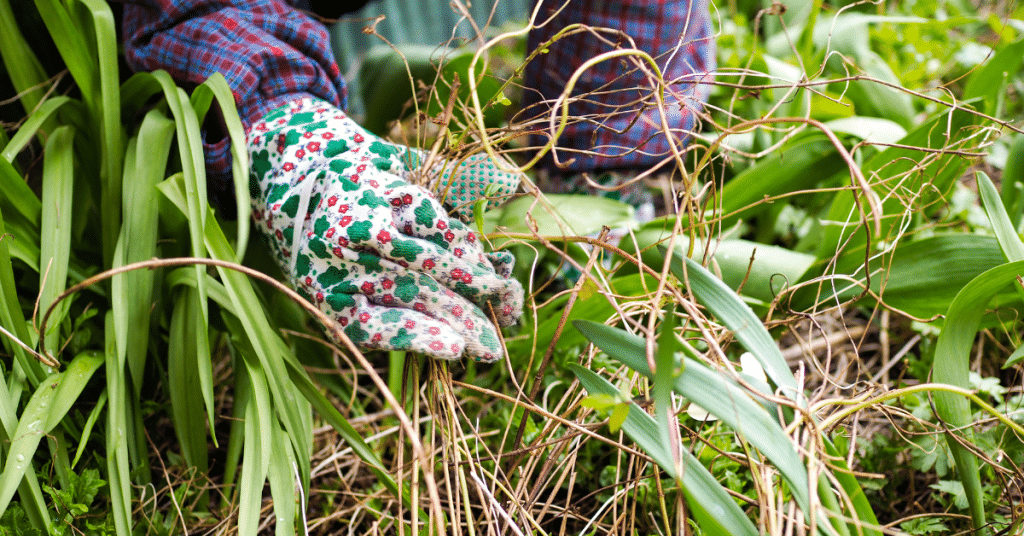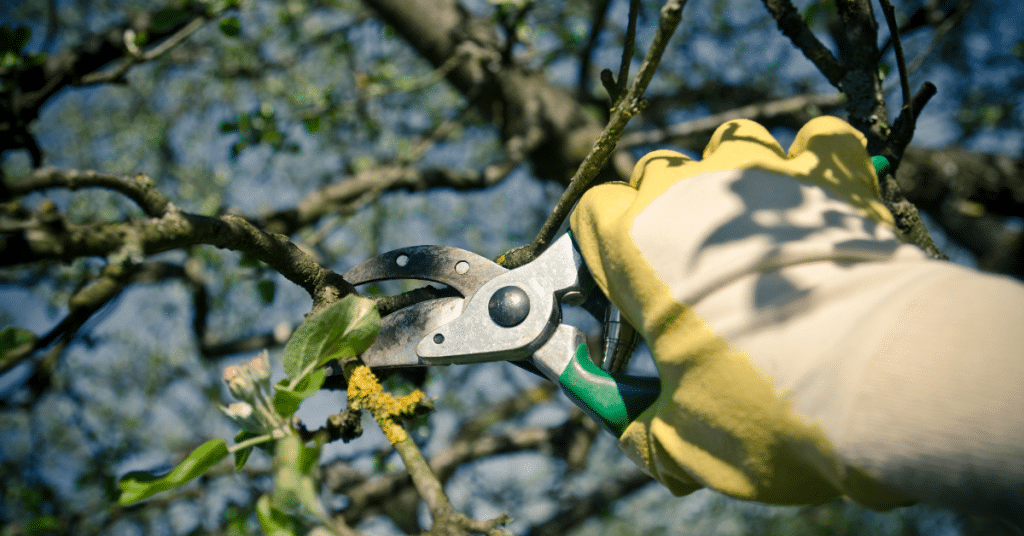15 Essential Steps How to Start an Organic Garden Journey

Hey there, fellow green thumbs! Are you ready to embark on an exciting organic gardening journey? You're in for a treat because we've all the essential steps to start your very own organic garden. Whether you have a spacious backyard or just a tiny balcony, this guide will help you cultivate your own little piece of paradise. So grab your gardening gloves, and let's start your organic vegetable garden and grow organic produce!
Steps on How to Start an Organic Garden
Before we get our hands dirty, let's lay the groundwork for your organic garden to produce healthy food. Proper preparation is key to success, so let's dive into the essential first steps.
Step 1: Assessing Your Soil
First things first, let's check out if you have healthy soil. After all, healthy plants need a solid foundation to thrive, so you need to consider the soil fertility. Consider getting your soil tested to determine its pH level and nutrient composition. With this knowledge, you'll know what amendments and organic soil enhancer or fertilizers your soil needs to create an excellent atmosphere for your plants.
Step 2: Choosing the Right Plants
Now that you know your soil's characteristics, it's time to pick the right plants for your garden. Consider factors like sunlight requirements, climate suitability, and the space available. Are you dreaming of vibrant flowers or bountiful veggies? Take your time to research and select plants that will flourish in your specific conditions. Also, remember to use organic seeds when starting your seedling.
Step 3: Creating Garden Beds, Vertical Gardens, or Container Garden

Now that you know what you'll be growing, it's time to create the perfect home for your plants. You can create traditional garden beds or raised bed or install vertical gardens if you have ample space. For those with limited space, don't worry! Containers and pots can work wonders, allowing you to grow various plants on your balcony or patio. Just add your potting mix and grow plants of your choice. You can plant leafy greens and other vegetables that suit your local climate in your raised beds.
Step 4: Composting and Mulching
Let's talk about feeding your garden the natural way. Creating a compost pile from your kitchen scraps and yard waste reduces waste and provides organic nutrients for your plants. Gather organic material, such as grass clippings, assemble a composting system, and let nature work magic. Additionally, mulching your garden beds with organic materials like straw or wood chips helps retain moisture, suppress weeds, and enrich the soil over time.
Step 5: Watering Techniques and Irrigation
Plants, like us, need hydration to thrive. Mastering watering techniques is essential for your garden's success. The key is to provide the right amount of water at the right time. Monitor your plants' needs, and avoid overwatering or underwatering. Consider installing drip irrigation systems to conserve water and ensure efficient delivery to your plant roots.
Step 6: Natural Pest Control
Ah, pesky pests-the bane of every gardener's existence. But fear not; there are natural ways to keep them at bay aside from using toxic chemicals. Embrace companion planting, where certain plants naturally repel pests or attract beneficial insects that act as nature's pest control squad. You can also make homemade organic pest sprays using neem oil or garlic to deter unwelcome visitors.
Phew! We've covered quite a bit in this section already. But don't worry, and there's more to come. Stay tuned for the next section, where we'll continue our journey through the remaining essential steps to kickstart your organic garden. Get ready to dig deeper into crop rotation, weed management, and organic fertilization. Your garden is about to bloom with life!
Welcome back, green thumbs! Now that we've covered the initial steps of preparing your organic garden, it's time to delve deeper into the remaining essential steps. Get your gardening gloves back on as we continue our journey toward a flourishing organic garden.
Step 7: Crop Rotation and Companion Planting
To keep your garden vibrant and healthy year after year, it's crucial to practice crop rotation. This means changing the location of your plantings each season to prevent the buildup of pests and diseases. Companion planting is a clever strategy where certain plants are grown together to enhance growth, repel pests, or improve flavor. Discover the perfect plant combinations and watch your garden thrive in harmony.
Step 8: Weed Management

Ah, the battle against weeds! But fear not; you can keep those pesky invaders in check with the right strategies. Regular weeding is essential to prevent competition for nutrients and space. Embrace organic methods such as mulching, hand-pulling, or natural weed suppressants like vinegar or boiling water. Maintaining a weed-free environment will allow your plants to thrive without competition. Put your floral gardening gloves on and pull those pesky weeds out.
Step 9: Organic Fertilization
Just like humans need a balanced diet, plants require proper nourishment too. Organic fertilizers are the key to providing your garden with the nutrients it needs for robust growth. Explore natural fertilizers like compost, worm castings, and organic plant-based fertilizers to enrich your soil. These options feed your plants and improve soil health in the long run, creating a sustainable ecosystem within your garden, unlike chemical fertilizers.
Step 10: Harvesting and Seed Saving
The moment you've been waiting for-harvest time! As your garden matures, it's essential to harvest your crops at the right moment for peak flavor and freshness. Each plant has its own signals indicating readiness for harvest. Be sure to research and learn about the ideal harvesting time for each crop you're growing. Additionally, consider the joy of seed saving, where you can preserve heirloom varieties by collecting and storing seeds for future seasons. It's a rewarding way to promote biodiversity and continue your garden's life cycle.
Wow! Can you believe how far we've come in our organic gardening journey? You've learned about crop rotation, companion planting, weed management, organic fertilization, and the art of harvesting and seed saving. Your garden is well on its way to becoming a vibrant oasis of organic goodness.
But wait, we're not done yet! Stay tuned for the final section to discuss the crucial aspects of maintaining your garden for long-term success. From watering techniques to soil health, we'll ensure that your organic garden thrives and continues to bring you joy and bountiful harvests.
Maintenance and Long-Term Success of Your Garden
Welcome back, gardening enthusiasts! Now that you've mastered the essential steps to kickstart your organic garden, it's time to shift our focus towards long-term success. Maintaining and nurturing your garden is the key to reaping bountiful rewards year after year. Let's dive into the final section and uncover the secrets to a thriving organic garden.
Step 11: Regular Watering and Pruning

Water is life, and your plants depend on it. Keep a close eye on their water needs and ensure they receive adequate hydration. Remember, watering deeply and less frequently is better, encouraging plants to develop deep root systems. Additionally, regular pruning promotes healthy growth and shapes plants, improving air circulation and preventing disease. Bring out your mini electric pruning saw and quickly trim away dead branches or damaged foliage, and watch your garden flourish with vitality.
Step 12: Soil Health and Nutrient Replenishment
Your garden's success lies in the health of its soil. Regularly monitor soil health by testing its pH levels and nutrient content. Adjust as needed by incorporating organic matter, such as compost, to enhance fertility and improve soil structure. Mulching is also beneficial as it helps retain moisture, suppress weeds, and gradually enrich the soil. If you tend to your soil, your plants will thrive. Do not use synthetic fertilizers as they will damage the soil structure in the long run.
Step 13: Pest and Disease Management
Garden pests and diseases can be formidable foes, but you have the power to combat them naturally. Look for any indicators of trouble with your plants, and act quickly to remedy the situation. Implement organic pest control methods like introducing beneficial insects, using neem oil sprays, or creating physical barriers. Maintaining a healthy and diverse ecosystem within your vegetable gardens will naturally deter pests and promote balance.
Step 14: Continuous Learning and Adaptation
Gardening is a journey of discovery and continuous learning. Stay curious and expand your knowledge about organic gardening practices. Attend workshops, join gardening communities, get insight from your fellow organic gardener, and consult reliable sources to stay updated with the latest techniques and trends. Adapt your methods as you gain experience and understand your garden's unique needs. Remember that each garden and growing plants is unique, and embracing innovation will lead you to new heights of success and produce organic foods for your family.
Step 15: Enjoy the Fruits of Your Labor
Finally, it's time to sit back, relax, and savor the joys of your organic garden. Watch as vibrant flowers bloom, luscious fruits ripen, and nutritious vegetables grace your table. Take pride in your sustainable choices, knowing you nurture your garden and the environment. Share the abundance of your organic plants with friends and family, spreading the love for organic gardening and inspiring others to embark on their own green journey.
Congratulations, my fellow organic gardeners! You've completed the essential steps to grow an organic garden and learned the art of maintaining it for long-term success. As you continue this delightful journey, carefully nurture your organic gardens, respect nature's cycles, and relish the beauty and flavors it brings to your life.
Now go forth, tend to your organic garden, and let the magic of nature unfold before your very eyes. Review our organic gardening basics blog post for the basic guide if you are lost on your gardening steps.
Happy gardening!
